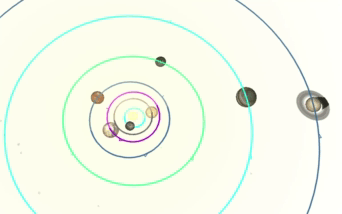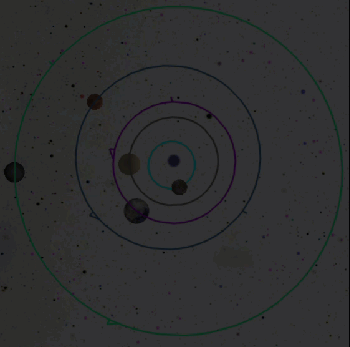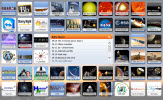June 2023
This month three of the outer giant ringed planets, Jupiter, Saturn, and Uranus will all be visible above the eastern horizon in the hours before local time of sunrise. The innermost planet, Mercury, will possibly be visible but low over the eastern horizon before sunrise. Venus and Mars are visible in the evening skies over the western horizon with Venus far outshining Mars. Venus moves closer to Mars but Venus will reach its greatest eastern elongation before it catches up to Mars. Once that happens the separation will increase.
Click here for the month at a glance calendar.

What is this? "It's a prediction of when Lees Summit, MO, will have good weather for astronomical observing." Click on the graphic to go to the Clear Sky web site.

Mercury spends most of this month rather low over the slightly northeast horizon rising about one hour before the Sun rises.
Venus is bright and shining over the western horizon a couple of hours after sunset local time. Nearby are the 'Twin Stars', Pollux and Castor, and above Venus is the planet Mars. During June Venus will move closer to Mars but not catch up with the 'Red Planet'.
Mars is visible over the western horizon at at sunset and is near the star Regulus in Leo the Lion, and above Venus. Watch for a close conjunction between Mars, Venus and the waxing crescent Moon on the evening of June 21st.
Dwarf Planet Ceres is a few degrees east from the star Denebola in Leo the Lion and during this month will have an apparent magnitude of between 7-8 making it too dim to be see without some optical assistance.
Jupiter rises about 2 hours before the Sun rises and will be visible above the southeastern horizon. Watch for a close conjunction with the waning crescent Moon on the 14th.
Saturn rises about 3 hours before the Sun rises and on the morning of the 9th and 10th the Waning Gibbous/waning crescent Moon will pass by Saturn.
Uranus rises about 1 hour before the Sun and has a bright enough apparent magnitude to be seen with binoculars and possibly unaided eye if the skies are dark enough. If you can see Mercury you may be able to use Mercury to help find Uranus.












